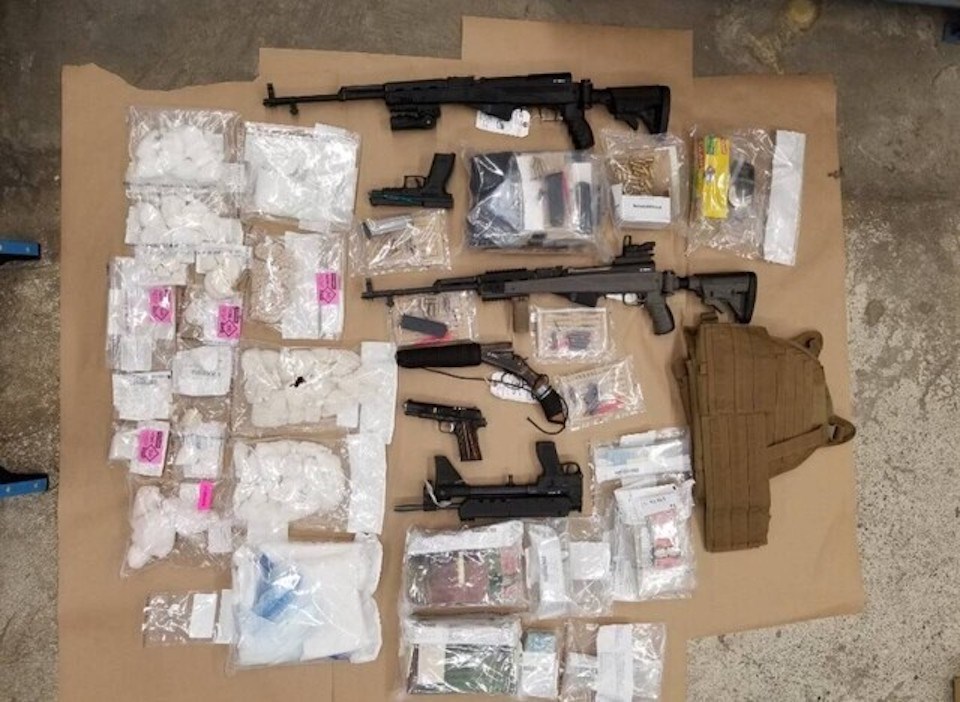Civil forfeiture regimes that allow governments to seize citizens’ assets, along with unexplained wealth orders — a type of court order that requires people to explain to a judge how they acquired funds — are often described as essential weapons in the battle against money laundering and profitable criminal activity, most notably illegal drug trafficking.
British Columbia’s 2023 embrace of unexplained wealth orders was accompanied by several references to cracking down on organized crime.
In recent adjustments to a similar unexplained wealth initiative, Manitoba pointed to the evils of organized crime and the drug trade.
When Ontario introduced the idea of civil forfeiture law at a summit on crime way back in 2000, it also touted the newly minted device as central to the battle against money laundering and organized crime.
Scant results
Crime control usually means abating or reducing crimes. But years of civil forfeiture regulations don’t seem to be resulting in any meaningful abatement in organized crime, particularly in the illicit drug trade.
Statistics released in 2020 show the persistence of the illegal drug crisis and the trade fuelling it. News coverage is rife with stories about incidents involving deadly fentanyl, for example.
Despite having civil forfeiture laws on the B.C. books for many years, the British Columbia Cullen Commission — which filed its final report in 2022 — was specifically convened to analyze serious money-laundering problems in provinces across Canada and to offer recommendations. One of those recommendations was the implementation of an unexplained wealth order regime.
But are civil forfeiture law and unexplained wealth orders less about crime control and more about raising public funds? Their particular impacts on criminal activity aside, maybe it would be more honest to speak about these tools as methods of seizing money from the criminal economy rather than to control or prevent crime.
Compensation, blurred lines
No one quibbles when a victim of crime sues a criminal perpetrator to recover assets fraudulently obtained. Civil forfeiture laws enable a province to recover, through a civil process, the proceeds of crime.
Provincial forfeiture regimes ordinarily operate in a manner similar to standard civil proceedings, with the province generally having to prove that certain properties or assets were derived from crime and are therefore liable to forfeiture.
Provincial regimes also generally allow recovered resources to flow through to the victims of crime or to other civic projects. Sections 18 and 19 of the Manitoba forfeiture law, for example, establish a criminal property forfeiture fund that provides payments to the victims of crime.
Of course, civil forfeiture is problematic precisely because the plaintiff is the state — the province, in this instance — and not a victim or a group of victims. Since criminal activity, not civil wrongdoing like negligence, underlies the action, civil forfeiture regimes blur the distinction between criminal and civil law.
The Supreme Court of Canada weighed in on this controversial blurring when it ruled that civil forfeiture is constitutional.
In a curious vindication of the idea that property can be forfeited not because it derives from crime, but because it might be used in some future crime, the British Columbia Court of Appeal also rejected constitutional challenges to an aspect of B.C.’s civil forfeiture law.
Civil forfeiture law is a vehicle of civil recovery — in other words, the recovered money acquired through crime is used to compensate the victims of crime — but unexplained wealth orders go even further. That’s because they alter the classic civil rules of engagement.
Burden of proof
Ordinarily, someone who alleges a wrongful act has occurred must prove it by referring to the civil legal standard of a balance of probabilities, essentially meaning it’s more likely than not that a crime was committed.
But the unexplained wealth regulations in Manitoba and British Columbia turn the burden of proof on its head. They require a property owner to disclose the sources of funds used to acquire that property. The court order is granted if there are reasonable grounds to believe — not prove — that a property owner has used funds derived from illegal activity.
If someone fails to adequately respond to the order and prove that lawfully acquired resources were used to buy the property, then it’s presumed the resources used derived from crime.
This combination — obtaining an order compelling the disclosure of the sources of funds used to acquire property along with the presumption of criminal or unlawful acquisition of funds — is at odds with how civil proceedings usually work. Property owners are presumed to have some unlawful source of income and, to hold onto their stuff, must prove that lawfully acquired funds were used to purchase an asset.
The burden of proof is on property owners, not on the state. This stacks the deck in favour of the province.
Concerns about state powers
While the constitutional legitimacy of civil forfeiture law has been examined by the courts, civil liberties groups have expressed concerns about an untenable extension of state powers, potential Charter of Rights and Freedoms infringements and privacy violations in relation to unexplained wealth orders.
Amid concerns about organized crime, civil forfeiture laws and unexplained wealth orders may appeal to public sentiment. They both fit neatly with the age-old mantra that crime should not pay.
But the public should be told, from the perspective of effective public policy, if initiatives aimed at controlling crime aren’t working.
Civil recovery is not crime control, though it has a place. But not all civil recovery initiatives are necessarily just.
It may be fair to rely on civil forfeiture to recover resources tainted by criminal activity since the province bears the burden of proving its case to the civil standard of a balance of probabilities. But whether it’s fair, under an explained wealth regime, to impose that burden on property owners remains an open question.
M Michelle Gallant received funding from Ontario Law Foundation




